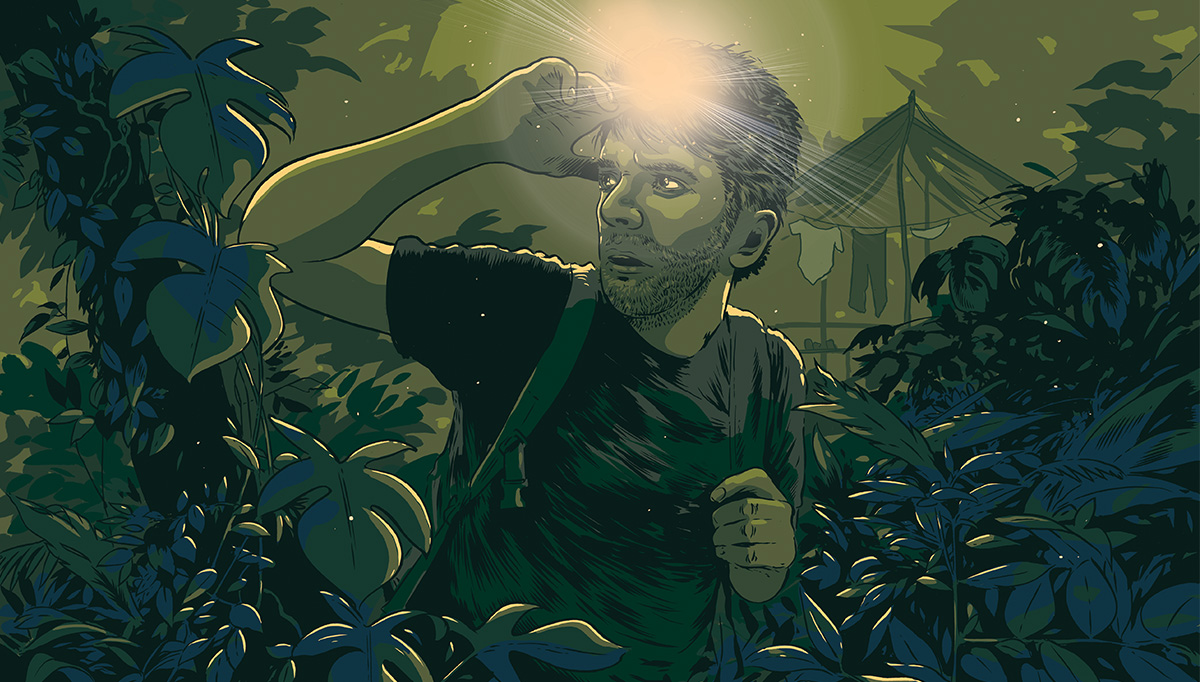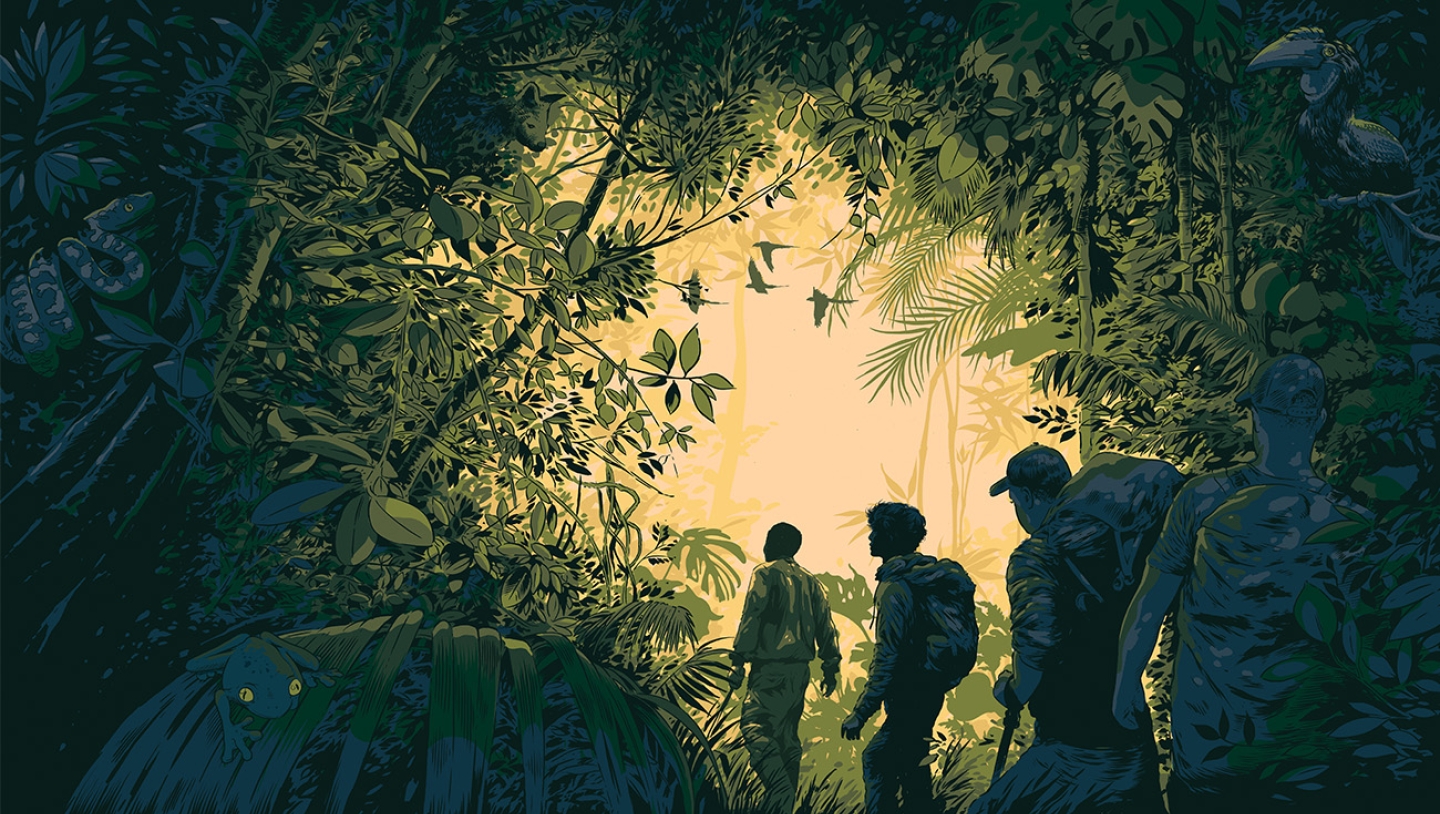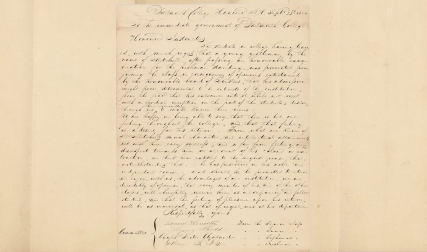Fog wreathes the rainforest in an ethereal veil, guarding what we seek. Machetes in hand, we push onward up the muddy ridgeline, hacking a narrow path through bamboo thickets and moss-draped trees. Nothing stirs.
Suddenly, we smell a strong, musky odor. “Tree kangaroo,” Eky whispers, his eyes widening. The ghost we have been pursuing for the past week is close at hand.
We are more than 6,000 feet up the flank of the Wondiwoi Mountains, an isolated range in Indonesian New Guinea. My brother, Ryan, and I are in only the second group of Americans to ever reach these mountains. Even the locals from the fishing village of Wasior seldom venture here. It is too cold, steep, and dangerous. We are accompanied by our coleader Jody Bragger, filmmaker Alex Menschlich, and 10 men from Wasior. One of them is Eky, our guide, who confidently leads us through the tangled jungle wearing nothing more than a T-shirt, shorts, and worn-out flip-flops.
The expedition came to fruition improbably. Having long been enthralled by tales of explorers—Polynesian wayfinders, Sacagawea, Magellan—I sought to undertake an expedition of my own, but with more conservation and less scurvy. In doing so, I confronted a stubborn reality: How does one plan an expedition to a place few outsiders have ever been? A year and many emails later, I was put in contact with Bragger at Tellus Conservation, who was independently planning a similar expedition. Together, we forged contacts with an Indonesian NGO, YAPPENDA, and secured funding from the Oak Foundation and University of Oxford, Bragger’s alma mater. It was a lesson in persistence, collaboration, and conviction.
Being in the Wondiwois is an immense privilege. The village authorities graciously granted us access, but only after ensuring we were not spies or prospective miners. It is also, for my grandmother, a cause for much handwringing. We are several days from quality medical care and have no room for error. One false step could be disastrous.

But something more enticing is on our minds. The tree kangaroo is just that—a kangaroo that lives in the treetops. While some are habituated to humans, the species we are after is decidedly not. The Wondiwoi tree kangaroo (Dendrolagus mayri), whose range is restricted to its namesake mountains, is considered lost to science. It has been conclusively documented only once, in 1928. The International Union for Conservation of Nature (IUCN) lists it as “critically endangered, possibly extinct.” However, in 2018, a British botanist captured “photographs of a species that could possibly be the Wondiwoi tree kangaroo.” That is according to Re:wild, the international NGO spearheading the Search for Lost Species initiative that has gained widespread publicity in recent years. A “lost species” is any that has been lost to science for at least 10 years, but often it is more on the order of decades to centuries.
The prevailing sentiment is that most secrets on Earth have already been uncovered. We have queues to ascend Mount Everest, and the deepest ocean trenches are livestreamed into our homes. Exploration is now often viewed as a strictly celestial endeavor. However, species rediscovery conveys the exact opposite—that much has gone unnoticed right here on Earth. It is in part a message of hope. From our concrete kingdom, there is comfort in knowing that pockets of nature’s original splendor remain. We want to believe the natural world still holds some mystery—that a lost species, by virtue of its cunning or isolation or sheer luck, has evaded our detection. But a species can be lost for only so long. At some point, it is either rediscovered and conserved, or it slips into extinction.
The romanticism of species rediscovery also masks an urgent problem in biodiversity conservation: Significant gaps persist in our knowledge of species distribution. Tens of thousands of species are categorized as “data deficient” on the IUCN Red List. Expeditions such as ours, even if motivated by searching for a single lost species, can fill in those gaps. In just seven days of fieldwork, we discovered three putative new frog species and two undescribed taxa of birds, and we extended the known range of several bird species and a ringtail possum species by more than 100 miles. It makes sense: The Wondiwoi Mountains, which soar to more than 7,000 feet, are marooned in a sea of lowland and hill forest. This is a recipe for endemism. It also leaves the mountains vulnerable to climate change, deforestation, and other anthropogenic forces that threaten their biodiversity.
Thus, while some criticize the search for lost species as mere conservation tokenism, it delivers scientific benefits that extend far beyond species rediscovery. It also generates much-needed international awareness and funding that can help support community-driven conservation efforts that are often neglected.
Back in the Wondiwoi Mountains, we begin investigating the surrounding forest for the tree kangaroo. We encounter more fresh signs, including partially consumed epiphytic plants on the forest floor and long, vertical claw marks on trees. We are well above the upper elevation limit of the grizzled tree kangaroos that occupy these mountains. We spend the next few hours canvassing the area, teased by hints of their presence. Eventually, we conclude that the animal is likely concealed somewhere on the steep hillside below us, where we can not descend, rather than on the ridge itself. Once again, the Wondiwoi’s rugged topography has guarded its elusive secret.
My brother and I emerge from the jungle several days later, sopping wet, covered in leech bites, and reeling from a poisonous plant rash that has gone systemic. Sustained by two portions of rice a day and water from the occasional creek or bamboo shoot, our group is utterly exhausted. The Wondiwois have spit us back out. A dozen children—all of them Eky’s—spot us, and suddenly we have an excited entourage leading us to their village. I turn back one last time to watch the jungle disappear into the mountains’ misty heights. Somewhere up there, veiled by clouds and lost to the annals of science, at least for now, is a tree kangaroo. It is resting on a branch festooned with epiphytes, blissfully unaware that its kind has only a toehold in this far corner of the world, one that is rapidly slipping away.
Jack Bushong is an environmental studies major from Boulder, Colorado. You can view his expedition photos in this gallery.





